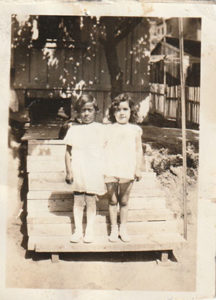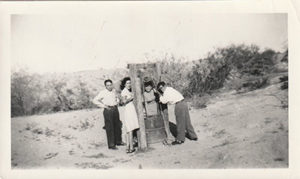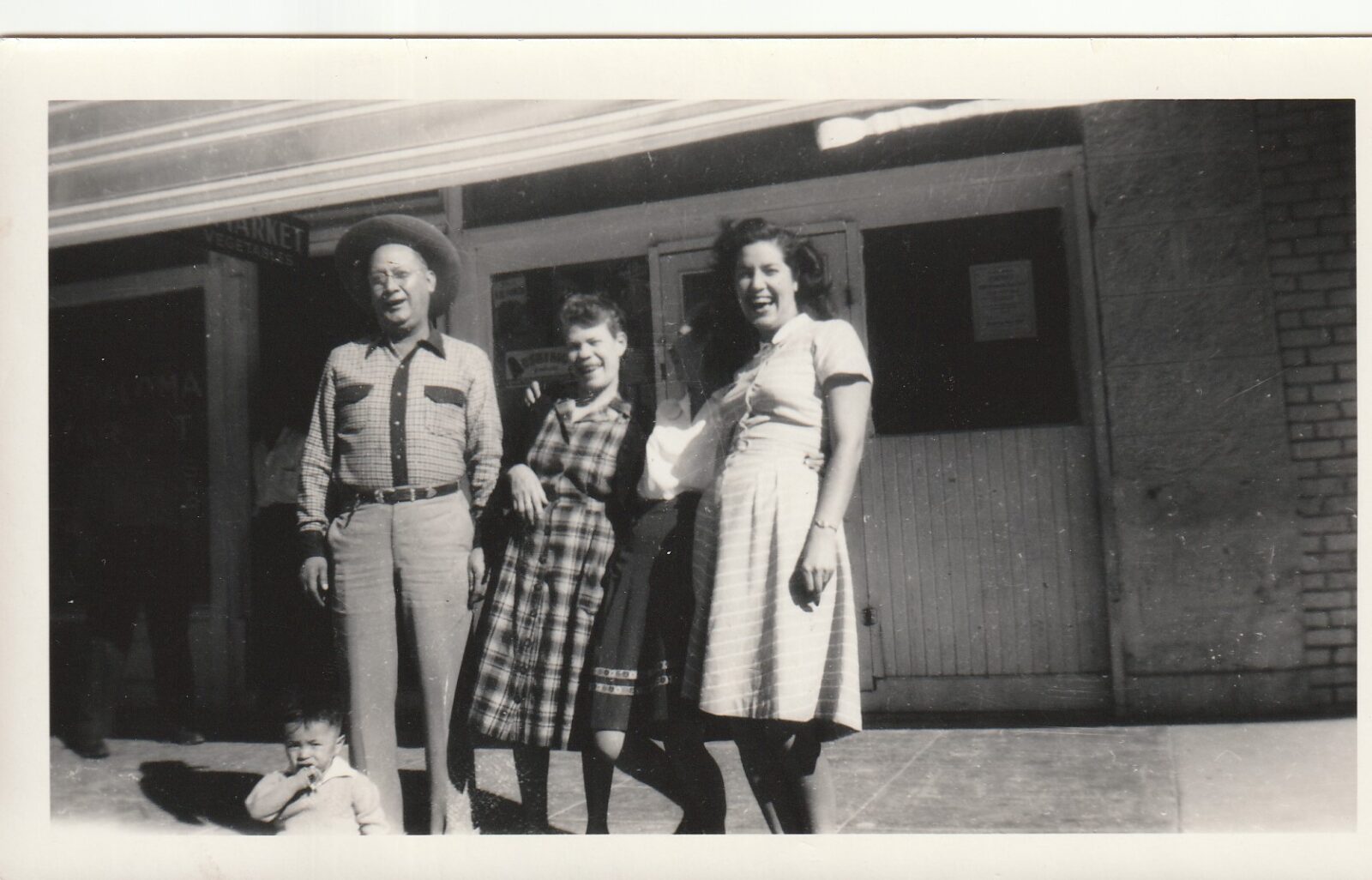Learn More About Chavez Ravine
Learn more about the area now known as Chavez Ravine, the real people who lived there, and the remarkable residents who fought to stay. Suggested reading, videos and digital resources.
My Personal Connection to Chavez Ravine
Where Dodger Stadium now sits in Chavez Ravine, just north of downtown Los Angeles, there was once a community made up of three tight-knit neighborhoods. The area was working class, and it was mostly Mexican American.

My mother, Dora, right
When I think of Chavez Ravine, two pictures come to mind. The first is of my mother as a four-year-old girl on the front steps of her house on Bishop Road in the Palo Verde neighborhood of Chavez Ravine. (The two other neighborhoods were named Bishop and La Loma.)
My mother and her sisters were born in that house, bought by my grandfather in 1925 from a Pasadena developer. The second picture is somewhere in the wind-swept hills of Chavez Ravine. It shows my mother as a young woman, posing with my uncle and two friends near a well.
My mother spent the first twenty-five years of her life up in Chavez Ravine, until her widowed mother accepted a buyout from the California Housing Authority. City agents used high-pressure tactics to scare residents into selling, threatening everything from calling the police to force them out to condemning their properties in order to make way for a public housing project.
Nearly everyone else left, too.
The housing project never happened.

My uncle Tony, my mother Dora & friends
In the winter of 1951, dealing with anti-public housing sentiment (creeping socialism!), the city council voted to cancel its contract with the housing authority.
Lots of complicated things happened between that point and 1959 when the city used the power of eminent domain to clear the last of the holdout families from Chavez Ravine. The forced removal happened after the California Supreme Court cleared the way for the public land to transfer to the private hands of Walter O’Malley, who wanted a new stadium site for his Brooklyn Dodgers. Construction for Dodger Stadium began in 1961.
So, what have I done with all of that, along with the few photos of Chavez Ravine I inherited, and the bits and pieces of stories I’ve been told about the place? Made up my own stories. With fictional characters set in a real place at time of great upheaval and trauma.







